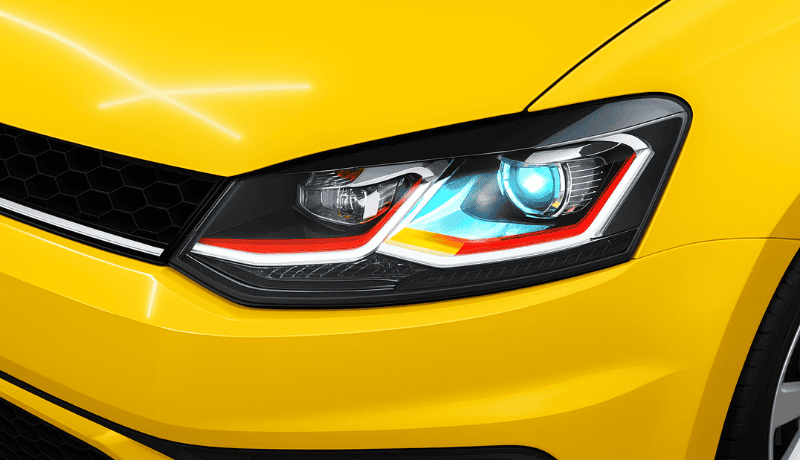Fleet vehicles face high operational and maintenance costs. What if a simple fleet vehicle modification could save maintenance expenses? Also, improving driver safety and operating efficiency? Doesn’t this seem too wonderful to be true? Think again.
In this article, we’ll look at comprehensive guide to LED headlights may improve your fleet operations and keep your drivers safe on the road. Upgrading to LED headlights can also lead to significant savings.
Importance of Proper Lighting for Fleet Vehicles
Fleet vehicles are a group of motor vehicles owned or leased by a business, government agency, or other organization. There are a lot of benefits of using LED headlights in vehicel.
These vehicles are typically used for specific purposes related to the organization’s operations. For example: Delivery trucks, Police cars or ambulances, Sales team cars for a corporate business.

Proper lighting of fleet vehicles is important for the following reasons.
- Safety First: Proper lighting helps drivers see clearly at night or in bad weather. It also makes the vehicle more visible to others on the road, reducing the risk of accidents.
- Follow the Rules: Proper lighting ensures the vehicle meets legal requirements. Broken or dim lights can lead to fines or penalties.
- Saves Money: Regular checks and maintenance of lights prevent bigger problems later. Fleet managers can reduce costly repairs and downtime by investing in high-quality LED headlights.
- Better Reputation: Well-maintained vehicles with proper lighting make the company look professional and reliable. It shows you care about safety and quality.
- Driver Confidence: When drivers know their vehicle’s lights are working well, they feel more confident and focused on the road. New drivers should follow driving tips to prevent accidents.
Benefits of LED Lights for Fleet Vehicles
LED lights don’t burn out as quickly as regular bulbs. Their life span is longer than that of Halogen or HID bulbs. Some factors also affect the lifespan of LEDs. So, they have some benefits over traditional bulbs.
LED lights consume less power, reducing fuel costs and operating costs. They can last up to 50,000 hours, reducing the need for frequent replacements. LED lights provide superior brightness, enhancing safety and reducing the risk of accidents.

Best LED Headlight Types for Fleet Vehicles
When selecting lighting for your heavy-duty vehicle, you will likely prioritize safety and functionality over design and aesthetics. Whether you purchase a single vehicle or a fleet, safety is a top consideration, particularly in the commercial sector.
Furthermore, you must observe the Federal Motor Carrier Safety Administration’s (FMCSA) rules. They have enacted various rules and regulations, and understanding these obligations is critical.
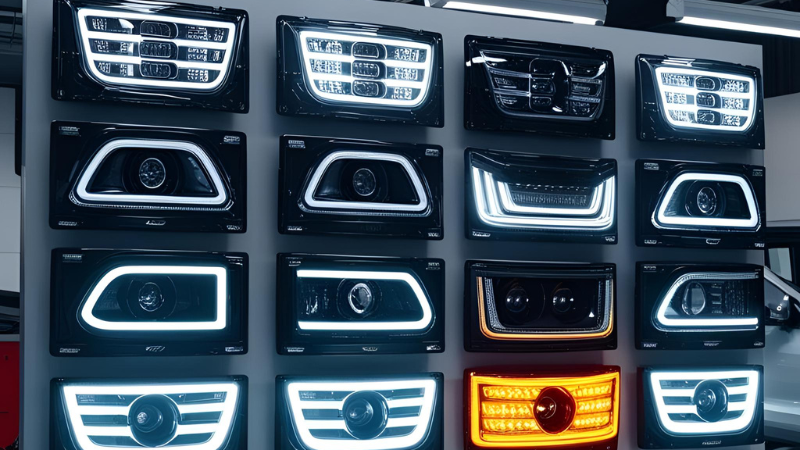
The following are the types of LED headlights for fleet vehicles and commercial trucks.
- Tail Lights
- LED Headlights
- Marker Lights
- Fog lights
- Spotlights and floodlights
- Daytime running lights (DRLs)
- Auxiliary lights
- Interior lights
- Underbody glow lights
- LED strobe lights
Heavy-duty vehicles require powerful, steady illumination to withstand extended hours on the road. LED headlights are an excellent choice for drivers due to their high brightness and ability to provide superb visibility in low-light settings.
They last longer than standard bulbs, saving you time and money on replacements. They are energy-efficient, which benefits the truck’s battery and reduces fuel use.
LED fog lights and auxiliary lights are perfect for trucks and vans working in harsh conditions. They cut through fog, rain, or dust, giving drivers better visibility and safety. Other auxiliary lights include daytime running lights (DRLs), spotlights, strip lights, and light bars.
How LED Headlights Lower Maintenance Costs
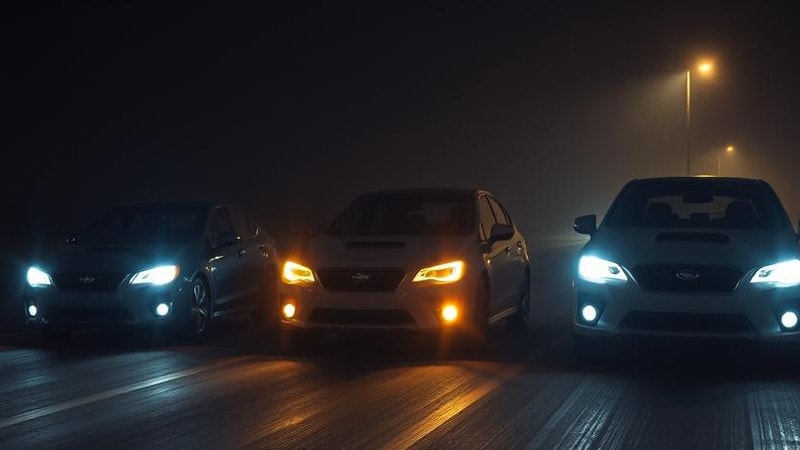
There are generally three headlights: LED, Halogen, and HID headlights. Each type has its pros and cons. A comparison table for these three headlights is given below.
| Feature | Halogen Headlights | HID Headlights | LED Headlights |
|---|---|---|---|
| How They Work | Use a tungsten element in halogen gas encased in quartz. Produces light and heat. | Pass electricity through xenon gas in a cylinder, emitting bright white light. | Use semiconductors that emit light when electrical current is applied. |
| Brightness | Yellowish light, less bright than HID or LED. | Bright white light, brighter than halogen. | Bright white light, brightest of the three. |
| Lifespan | 500 to 1,000 hours. | Up to 15,000 hours. | 25,000 to 45,000 hours. |
| Cost | 10to25 per bulb (least expensive). | Moderate to high cost; replacements can be costly and hard to find. | High cost; replacements can exceed $300 per bulb. |
| Energy Efficiency | Least efficient. | More efficient than halogen. | Most efficient, ideal for electric vehicles. |
| Time to Peak Brightness | Instant. | Takes a brief time to reach peak brightness. | Instant. |
| Common Use | Standard on older vehicles. | Often found on luxury vehicles, used as running lights. | Increasingly common, often offered as an option, used for unique designs. |
| Pros | Affordable, easy to replace. | Bright, long-lasting, and efficient. | Longest-lasting, energy-efficient, and instant brightness. |
| Cons | Less bright, shorter lifespan, yellowish light. | Expensive replacements can cause glare for oncoming drivers. | High replacement cost, though rarely needed due to long lifespan. |
From the above table, it is evident that the initial costs of LED are higher than those of other products. Its longer life span leads to long-term savings because of fewer replacements and lower labor costs.
A good preventative maintenance plan can help avoid unexpected breakdowns and keep your fleet running smoothly. Switching to LED lights can save energy and last much longer than traditional bulbs, reducing the need for frequent replacements.
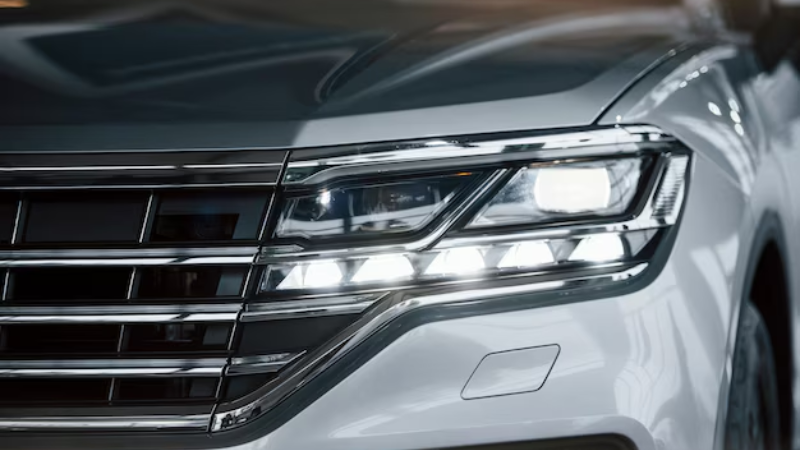
Integrating LED Lights with a GPS Fleet Management System
The Integrated GPS LED Light market is expected to increase from USD 1.5 billion in 2022 to USD 3.8 billion by 2030, with a compound annual growth rate (CAGR) of 12.3% over the forecast period. (by Verified Market Reports).
This market’s rise might be attributable to the growing demand for smart lighting solutions, including exact position monitoring.
Rapid improvements in LED technology, paired with the integration of GPS systems, have transformed several industries, including automotive, maritime, aviation, and outdoor sports, by improving safety, efficiency, and convenience.
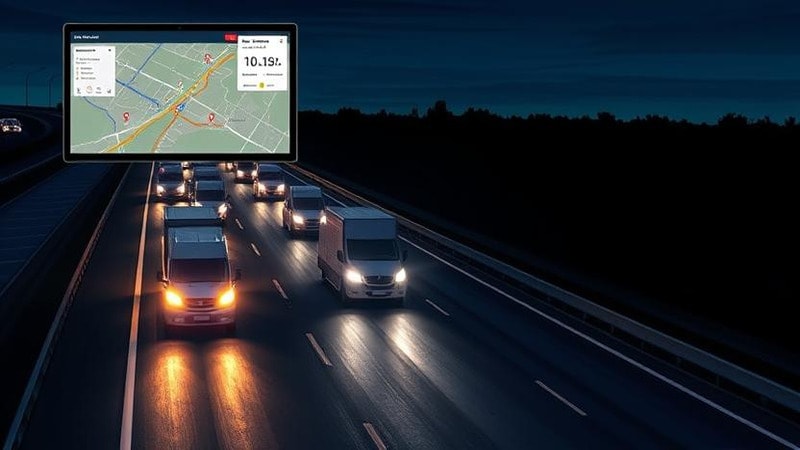
Optimize Routes, Save Fuel Costs
GPS devices assist fleet managers in determining the shortest and most efficient routes for their vehicles. Drivers may save time and gasoline by avoiding traffic bottlenecks, construction zones, and needless detours.
This decreases total fuel costs and allows the fleet to function more efficiently. Efficient routing also helps to improve scheduling and reduce delays.
Boost Safety & Efficiency
LED lights increase vehicle visibility in low-light circumstances. Other drivers can easily notice fleet cars, minimizing the likelihood of an accident. GPS tracking allows fleet managers to ensure that all cars have functional lights.
Improved visibility enables more effective navigation, especially in dark or congested places. The LED headlights last 50 times longer than stock halogen lights.
Monitor Performance & Maintenance Needs
GPS systems enable fleet managers to monitor vehicle performance and maintenance in real-time.
Managers can discover prospective problems early on by monitoring metrics such as fuel utilization, engine health, and tyre pressure. This helps to avoid costly breakdowns and minimizes vehicle downtime.
Real-time warnings ensure that maintenance is conducted on time, maintaining the fleet in excellent operating condition and minimizing operational disruptions.
Fleet Vehicle Maintenance and Safety
Regular maintenance ensures your fleet remains safe, efficient, and on the road. LED lights provide more safety by increasing visibility. They require frequent maintenance to remain reliable.
Combining long-lasting LEDs with proactive maintenance can reduce expenses and safeguard drivers. Simple measures taken today will save time and money later.

LED Lights Improve Fleet Safety and Lower Maintenance Costs
LED bulbs are gaining prominence in many fields. LED lights can improve safety, but they still need adequate maintenance. LED headlights affect fleet costs and safety in the following ways.
LED headlights shine brighter and farther than old bulbs. Better visibility helps drivers avoid accidents in bad weather. LED Headlights also boost nighttime driving safety. Bright light also keeps the driver calm and prevents aggressive driving.
LED lasts for years, not months. Fewer replacements mean lower labour costs and less downtime for your fleet. LEDs are energy efficient, cutting fuel costs. Fewer accidents from better lighting also mean lower repair bills.
Prioritizing maintenance allows fleet managers to decrease repair costs and downtime. Consistent maintenance keeps vehicles running smoothly and avoids unexpected problems that disrupt operations.
Early detection of minor issues reduces the likelihood of costlier breakdowns later on. Combine this with long-lasting LED lighting, which requires fewer replacements.
Choosing the Right LED Headlights for your Fleet Vehicles Maintenance
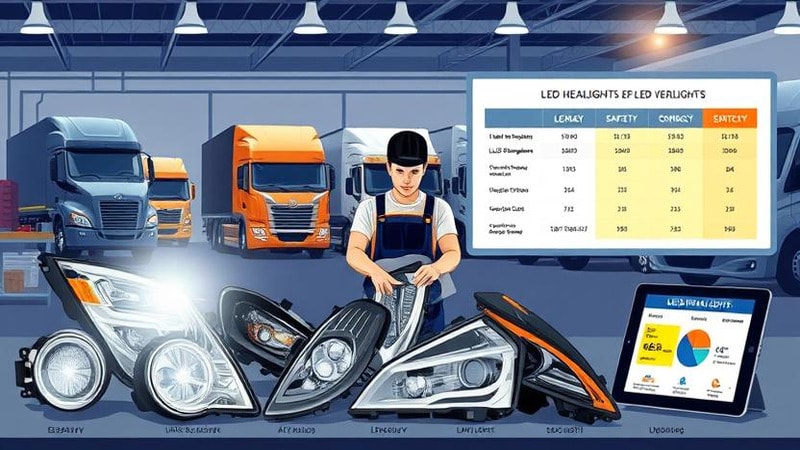
Fleet managers and logistics companies recognize that safety and cost-effectiveness are essential for success. Upgrading to LED headlights may help both. Here’s how to choose the finest LED headlights for your fleet vehicles.
1. Compatibility with Fleet Vehicles
Before buying LED headlights, check if they are compatible with your fleet vehicles. Consider:
Vehicle type: Trucks, vans, or trailers may need specific bulbs or adapters.
Driving conditions: LEDs with adjustable beams suit long-haul driving.
Brightness levels: Choose high and low beams that match your driver’s needs.
Proper compatibility ensures smooth installation and avoids costly replacements later.
2. Legal Compliance and Safety.
Safety is crucial for fleet operations. LED headlights should fulfil legal criteria, such as the Department of Transportation (DOT).
To avoid this, avoid using very bright lights that blind other drivers and use standardized beam patterns to drive safely at night. Safety reduces the risk of penalties and accidents while protecting your company’s reputation.
3. Simple Installation and Setup.
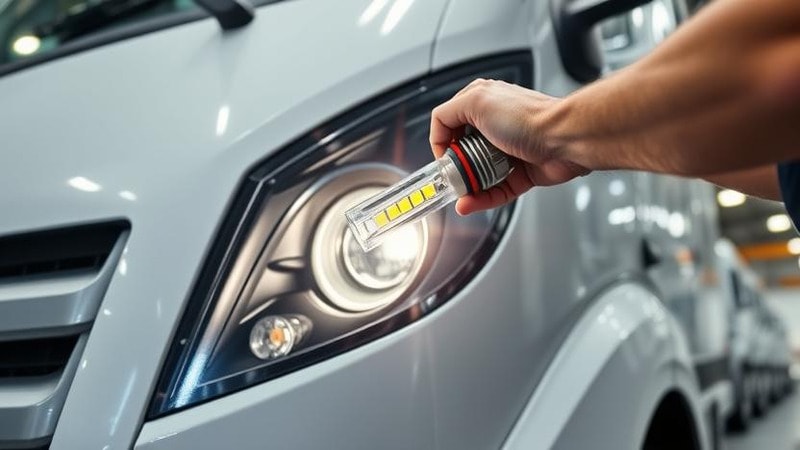
Time is money in fleet management. Choose plug-and-play LEDs to save on installation time.
Check to see if the seller gives clear instructions for DIY setup. Look for LEDs that do not need any extra tools or intricate wiring.
4. Energy Efficiency and Longevity.
LEDs consume less energy than halogen lighting, lowering fuel costs for your fleet. They also last longer, requiring fewer replacements. To ensure endurance, choose LEDs made of robust materials such as aluminium.
To withstand extreme circumstances, choose weather-resistant bulbs. Longer-lasting LEDs result in cheaper maintenance costs.
5. Evaluating Product Quality
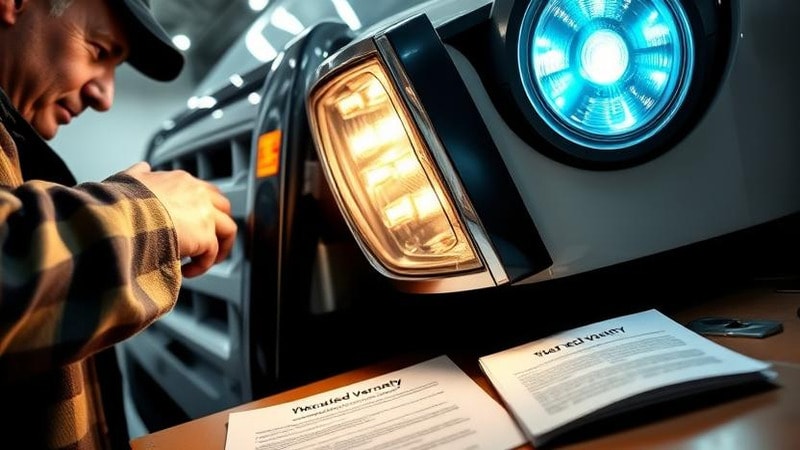
Quality is critical when managing a fleet of cars, trucks, etc. To choose the best LEDs: Check for consistency in colour and brightness. To avoid overheating, ensure that heat is dissipated efficiently.
Look for warranties from vendors as proof of reliability. LEDs of high quality are less likely to fail and provide consistent performance.
6. Cost Analysis for Fleet Operations.
Investing in superior LEDs saves money by lowering replacement and repair expenses over time. Compare specifications and pricing from reliable brands. Look for bulk-purchase discounts or loyalty offers.
7. Maintenance and Care.
Even the finest LEDs need maintenance to live longer. Choose headlights that are waterproof, dustproof, and rustproof for added durability.
Lights should be cleaned and inspected regularly to prevent damage. Proper maintenance extends the life of LEDs and reduces fleet operating expenditures.
FAQ
What does fleet maintenance include?
Fleet maintenance refers to the regular upkeep of your company’s vehicles. It can refer to oil changes, tyre rotations, fluid flushes, and other normal maintenance tasks required by the combustion engines that power most vehicle fleets.
How do we reduce fleet maintenance costs?
Fleet maintenance cost is reduced by prioritizing vehicle maintenance, managing driver behaviour, monitoring fuel efficiency, and implementing a fleet management system.
Can you replace stock headlights with LEDs?
Yes, with the help of a conversion kit, you can replace your stock halogen lights with LEDs.
Conclusion
Switching to LED headlights is a wise decision for fleet management businesses. They increase safety, save money, and cut maintenance requirements. LED lights are brilliant, robust, and energy-efficient, making them ideal for vehicles and fleets.
Partnering with a reputable supplier offers high-quality products and seamless integration. By updating to LEDs, fleet managers can maintain their cars compliant, efficient, and roadworthy. It’s a tiny alteration that has a significant impact on your business.
Ready to Invest in Affordable Fleet LED Headlights?
As a fleet manager, partner with reliable LED suppliers to get quality products like Bi LED, High Lumen and D series LED at competitive prices. Look for suppliers like Carlightvision who offer bulk quantity, a 5-year warranty, and after-sales support. A strong B2B relationship helps your business stay safe, compliant, and cost-efficient.
Upgrade your fleet with the right LED headlights today and drive safer, smarter, and more profitably. Say hi to our experts.




